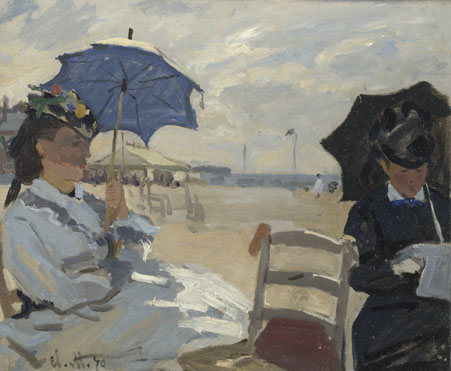*cue La Marseillaise* Happy Bastille Day from the Art Docent Program! Bastille Day marks the anniversary of the storming of the Bastille prison in Paris, France, and is basically France’s independence day. So, in the spirit of the day, we’ve decided to celebrate by looking at a small few of the many great art pieces done by French women and men.
As Paris was the center of the art world from the 1600s until the mid-20th century, we’ve got a lot of art to choose from. Especially if you take into account artwork produced in France by foreign artists that moved there, like Picasso. There’s even more if you count all the art on display in France. But for all intents and purposes, today we’re going to have a brief look at five of the most well-known French native artists. Just to remind everyone.
1. Braque. Poor Braque. One of the founders of cubism, he’s often swallowed up by the shadow of his once-friend and contemporary, Pablo Picasso. Here at the Art Docent Program, however, we realize that Braque is just as important as Picasso! His impressive cubist still-lifes are taught in both our third and fifth-grade curriculum. Just look at his Table. That deserves just as much attention as anything of Picasso’s, don’t you think?

2. Matisse. This guy. Where Matisse’s art career begins (Fauvism) is generally recognized as the beginning of modern art. He had a versatile style, which helped him to have a ridiculously long career and isn’t generally sorted into one movement or another, all of which are why the Art Docent Program teaches his art at just about every grade level. And his use of color is just excellent.

3. The Impressionists. Sometimes, I like to think of the Impressionists as a boy band where all the members happen to be equally talented but at different points in their respective careers. Like Van Halen. Renoir can be Eddie, Monet can be Alex, Manet can be the bassist that changes, and Degas can be David Lee Roth. Cezanne can be Sammy Hagar because he came later and everyone could recognize that he wasn’t Degas because he was in fact a Post-Impressionist. But that’s just the way my mind works.
Anyways, the Impressionists were interested in the idea of creating paintings that explored seeing and the way our eyes work. All of the members of Van Halen–er, the group that I’m calling the Impressionists, have a style all their own that we teach at various grade levels at the Art Docent Program.
.jpg)

.jpg)


4. Morisot. In my 80’s hair metal music allegory, Berthe Morisot can be Joan Jett because she’s just as rad enough to be part of the Impressionist rock band, but she did her own thing. Morisot, an Impressionist, experimented with the movement’s principles even more so than some of the greats. Her Skating in the Park, featured in our fifth-grade curriculum, takes Impressionism to a Fauve-like feel–which won’t be popular for another 20-30 years. Four for you, Berthe Morisot. You go, Berthe Morisot.

5. Delacroix. Delacroix’s Romatic commitments led him to paint Liberty Leading the People. Perhaps the quintessential image of French revolution, though not the French revolution, it’s no wonder Delacroix’s Romantic allegory of Liberty leading the people of Paris to fight against injustice still engages viewers today. Fun fact: this personification of Liberty appears so often in French art, she has a name– Marianne!

Happy Bastille Day from the Art Docent Program!







